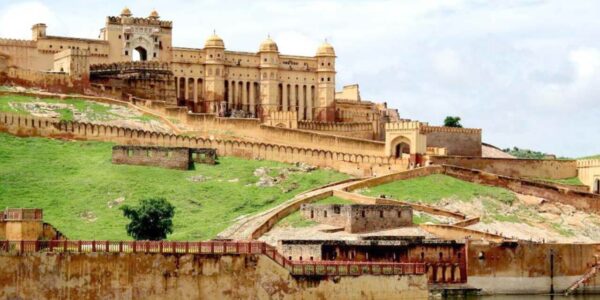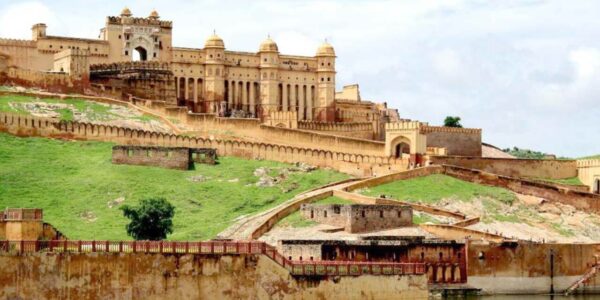
Jaigarh Fort is a magnificent fortress situated in Jaipur, Rajasthan, India. The fort was built by Maharaja Jai Singh II in 1726 to protect the Amer Fort and the palace complex from external attacks. The fort is also known as the Fort of Victory, and it is considered one of the most spectacular forts in Rajasthan.
- Significance: Jaigarh Fort is an important monument in Jaipur, and it played a significant role in the history of the region. The fort was built to protect the Amer Fort and the palace complex from external attacks, and it served as a military stronghold for the Rajput rulers.
- Location: The fort is located on a hilltop called the Cheel ka Teela, which provides panoramic views of the surrounding Aravalli Hills and the city of Jaipur. The hill is also home to the Nahargarh Fort, another important monument in Jaipur.
- Construction: Jaigarh Fort was built by Maharaja Jai Singh II in 1726, and it took almost three years to complete. The fort was designed by a Bengali architect named Vidyadhar Bhattacharya, who was also responsible for designing the city of Jaipur.
- Architecture: The fort was built in a Rajput military architectural style, with thick walls and bastions. It features palaces, temples, gardens, and reservoirs, and it is considered to be one of the best-preserved forts in India.
- Water harvesting: The fort has a unique water harvesting system called the “Rainwater Harvesting System,” which collects and stores rainwater in underground tanks. The system was designed to ensure a steady supply of water for the fort’s residents during times of drought.
- Jaivana Cannon: Jaigarh Fort is home to the largest cannon in the world, the Jaivana Cannon, which was manufactured within the fort’s premises and is still in working condition. The cannon was built in 1720, and it weighs around 50 tons. It was designed to fire cannonballs weighing up to 50 kg over a distance of 35 km.
- Museum: Today, the fort has been converted into a museum and is open to the public. It displays a collection of arms and ammunition, including swords, guns, and muskets used by the Rajput warriors. The museum also features a collection of antique coins, paintings, and sculptures.
- Royal treasure: It is believed that the fort was used to store the treasures of the royal family, including gold and silver coins, precious stones, and jewelry. The fort also had a mint, where coins were struck in the name of the Rajput rulers.
- Connection to Amer Fort: The fort is connected to the Amer Fort by a subterranean passage, which was used by the royal family to escape during times of war. The passage is about one kilometer long and has several exits, including one at the bottom of the hill.
- Secret passages: The fort has many secret passages and hidden tunnels that were used by the royal family to move around undetected. These passages were also used to store supplies and ammunition during times of war.
- Famous visitors: Jaigarh Fort has been visited by several notable figures throughout history, including Emperor Akbar, who is said to have stayed at the fort during his visit to Jaipur. The fort has also been visited by several British officials, including Lord William Bentinck and Lord Curzon.
- Film location: The fort has been a popular location for Bollywood and Hollywood film shoots, including the movie “Jodhaa Akbar” starring Aishwarya Rai Bachchan and Hrithik Roshan. The fort’s scenic location and historic architecture make it an ideal location for film shoots.

